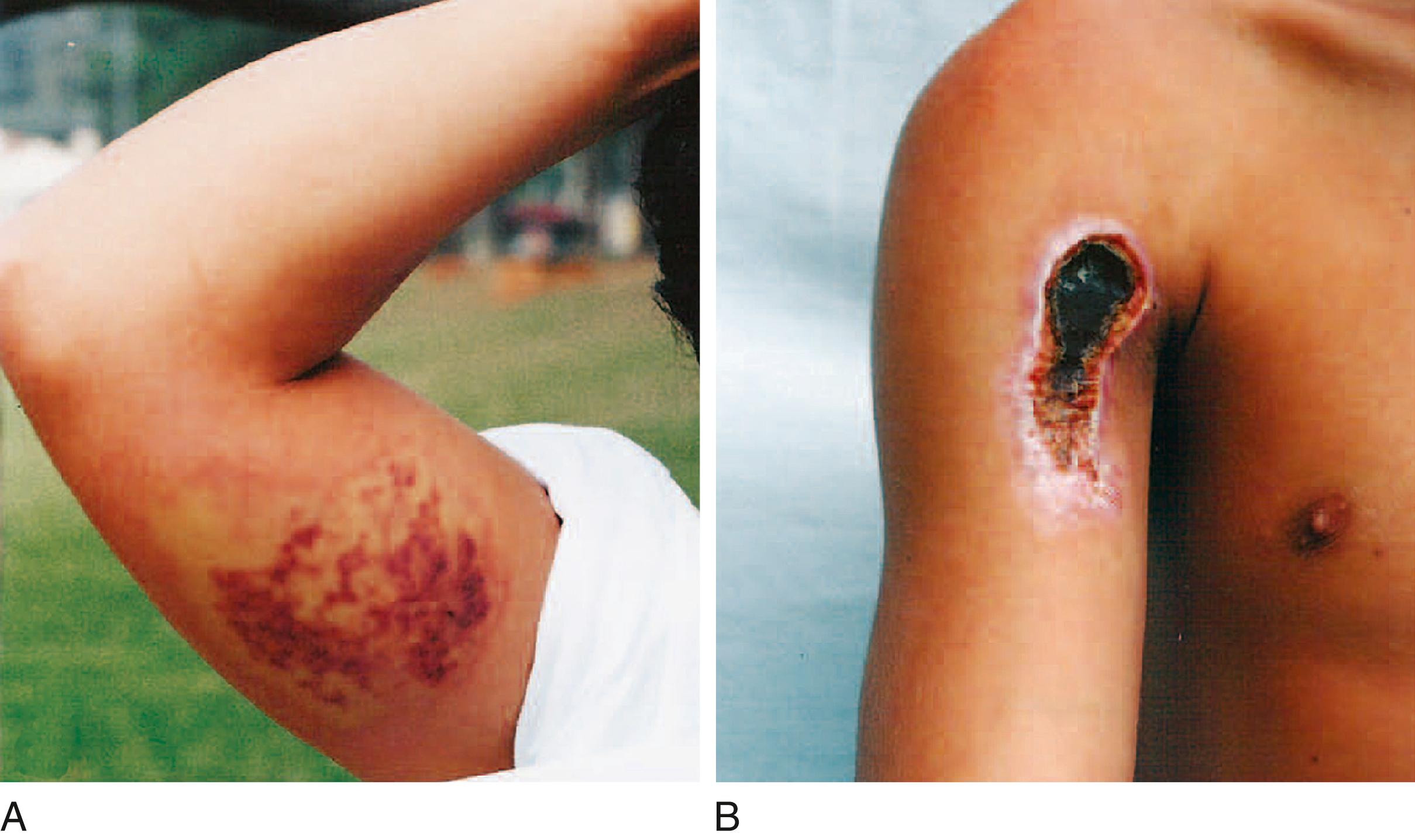Physical Address
304 North Cardinal St.
Dorchester Center, MA 02124
Occasionally patients will come in with a dead or captured spider after having rolled over it in bed or finding it in their clothing while dressing. They may have felt a minor pinprick sensation or no discomfort at all. Early presentations may show only mild erythema at the suspected bite site. Burning pain, pruritus, and swelling may develop within a few hours of the bite.
More commonly, patients come in with a raised erythematous painful lesion with central vesiculation, possibly hemorrhagic, or a darkened or bluish area of early skin necrosis. The patient or companion may suspect that this is a “spider bite,” even though a biting spider was never observed.
Brown recluse spider bites vary from mild local reactions to severe ulcerative necrosis with eschar formation (necrotic arachnidism) ( Fig. 163.1 ). The bite often appears as a central blister with mottling and a blanched halo, with surrounding erythema that sometimes makes it look “red, white, and blue.” Bites usually are found under clothing and on the thigh, lateral torso, or upper arm. They are uncommon on the neck and are rare on the hands, feet, or face. Transient and mild constitutional signs and symptoms, such as myalgias, malaise, fever, chills, nausea, vomiting, generalized rashes, and headaches, may accompany these bites. A small subset of patients can have a more severe systemic response.

Lesions from other arthropod species and a variety of medical conditions may mimic bites of the brown recluse spider.
Become a Clinical Tree membership for Full access and enjoy Unlimited articles
If you are a member. Log in here